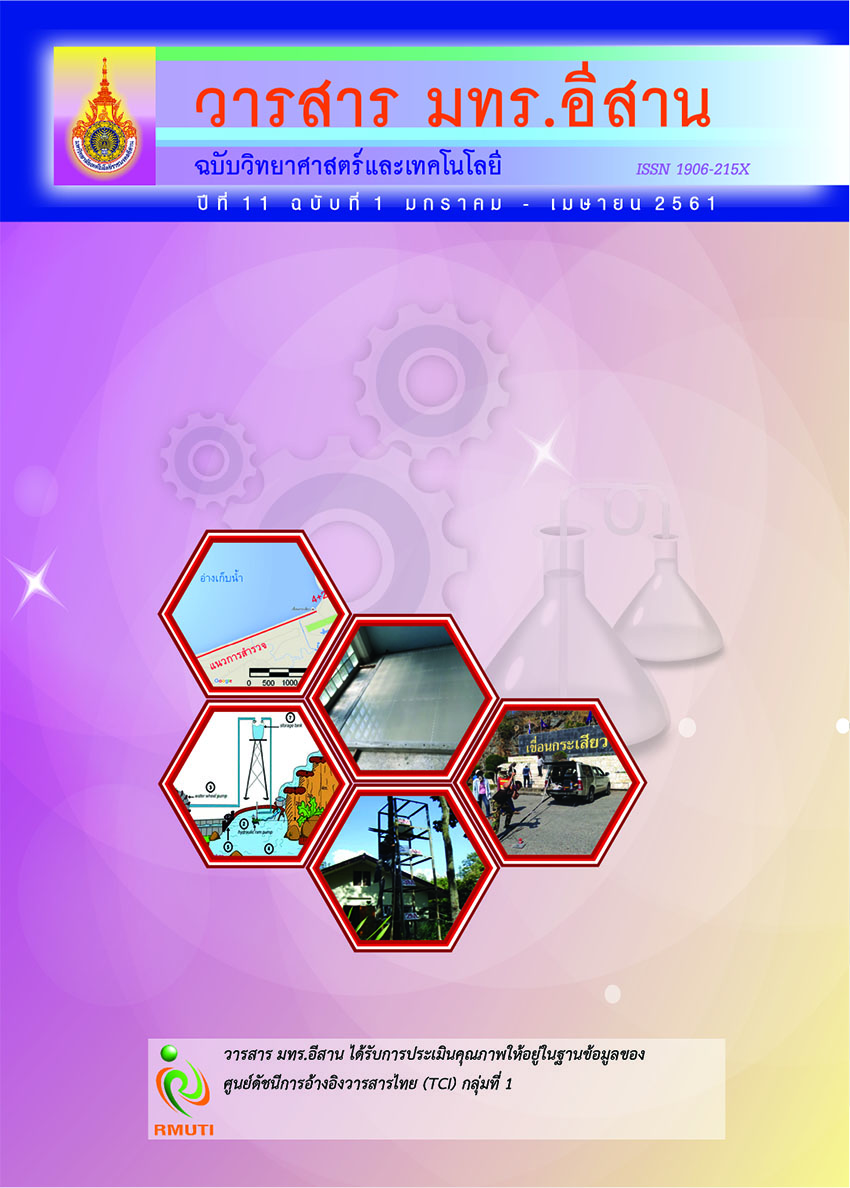Performance Analysis of Linear Search MLD for High Rate Full Diversity STBC in PDM-CO-OFDM
Main Article Content
Abstract
This work presents a performance analysis of linear-search high rate full diversity (HRFD)
for polarization division multiplexing coherent optical orthogonal frequency division
multiplexing (PDM-CO-OFDM) communication systems. The space-time block code (STBC)
is used to gain up signal to noise ratio (SNR). To achieve a high rate and full diversity,
a STBC code is provided -where it is orthogonal between the consequence times. The maximum
likelihood detection (MLD) is used. In addition, the number of searching for decoding is
dependent on only constellation sizes while the conventional scheme; ex. the Silver code,
its searching grows up exponentially. The proposed method is called high rate full diversity
STBC (HRFD-STBC). The system performance of the system is evaluated by numerical
simulation method. The results show that the bit error rate (BER) performance of the
proposed HRFD-STBC is slightly higher than the Silver Code. However, at the high
polarization dependent loss (PDL) channel, the BER of the STBC code is only a little higher
that the Silver Code.
Article Details
References
Vol. 27, Issue 3, pp. 189-204. DOI: 10.1109/JLT.2008.2010061
[2] Qi, Y., Yan, T., Ma, Y., and Shieh, W. (2009). Experimental Demonstration and Numerical
Simulation of 107-Gb/s High Spectral Effi ciency Coherent Optical OFDM. Journal of
Lightwave Technology. Vol. 27, Issue 3, pp.168-176
[3] Brendon, J. C., Schmidt, Arthur James Lowery, and Jean Armstrong, (2009). Impact of PMD
in Single-Receiver and Polarization-Diverse Direct-Detection Optical OFDM. Journal of
Lightwave Technology. Vol. 27, No. 14, pp. 2792-2799
[4] Tarokh, V., Jafarkhani, H., and Calderbank, A. R. (1999). Space-Time Block Codes from
Orthogonal Designs. IEEE Transactions on Information Theory. Vol. 45, No. 5, pp. 1456-1467
[5] Jaouen, Y., Mumtaz, S., Awwad, E., and Othman, G. R. (2012). Space-Time Codes for Fiber
Communications: Coding Gain and Experimental Validation. In Proceeding 2012 8th
International Symposium on Communication Systems, Networks & Digital Signal
Processing (CSNDSP). pp. 1-5
[6] Hollanti, C., Lahtonen, J., Ranto, K., Vehkalahti, R., and Viterbo, E. (2008). On the Algebraic
Structure of the Silver Code: A 2 × 2 Perfect Space-Time Block Code. In Proceeding IEEE
Information Theory Workshop ITW ‘08. pp. 91-94
[7] Belfi ore, J. -C., Rekaya, G., and Viterbo, E. (2004). The Golden Code: A 2 x 2 Full-Rate
Space-Time Code with Non-Vanishing Determinants. In Proceeding International
Symposium on Information Theory. pp. 310-310
[8] Awwad, E., Jaou n, Y., and Rekaya-Ben Othman G. (2013). Polarization-Time Coding for
PDL Mitigation in Long-Haul PolMux OFDM Systems. Optics Express. Vol. 21, Issue 19,
pp. 22773-22790
[9] Barry, John R., Lee, Edward A., and Messerschmitt, David G. (2003). Digital Communication.
3rd Edition. Springer.
[10] Yong, Q. H., Wen, T. L., Xiao, C. X., and Ray, T. C. (2017). Orthogonal STBC for MDL
Mitigation in Mode Division Multiplexing System with MMSE Channel Estimation. Journal
of Lightwave Technology. Vol. 35, Issue 1, pp. 1858-1867
[11] Sezginer, S., Sari, H., and Biglieri, E. (2009). On High-Rate Full-Diversity 2 × 2 Space-Time
Codes with Low-Complexity Optimum Detection. IEEE Transactions on Communications.
Vol. 57, No. 5, pp. 1532-1541
[12] Puntsri, K. (2015). Low-Complexity MLD for Full Diversity High Rate STBC in PDM-CO-OFDM
Communication Systems. In Proceeding 38th Electrical Engineering Conference
(EECON-38). pp. 557-560
[13] Ip, E. and Kahn, J. M. (2007). Digital Equalization of Chromatic Dispersion and Polarization
Mode Dispersion. Journal of Lightwave Technology. Vol. 25, No. 8, pp. 2033-2043

